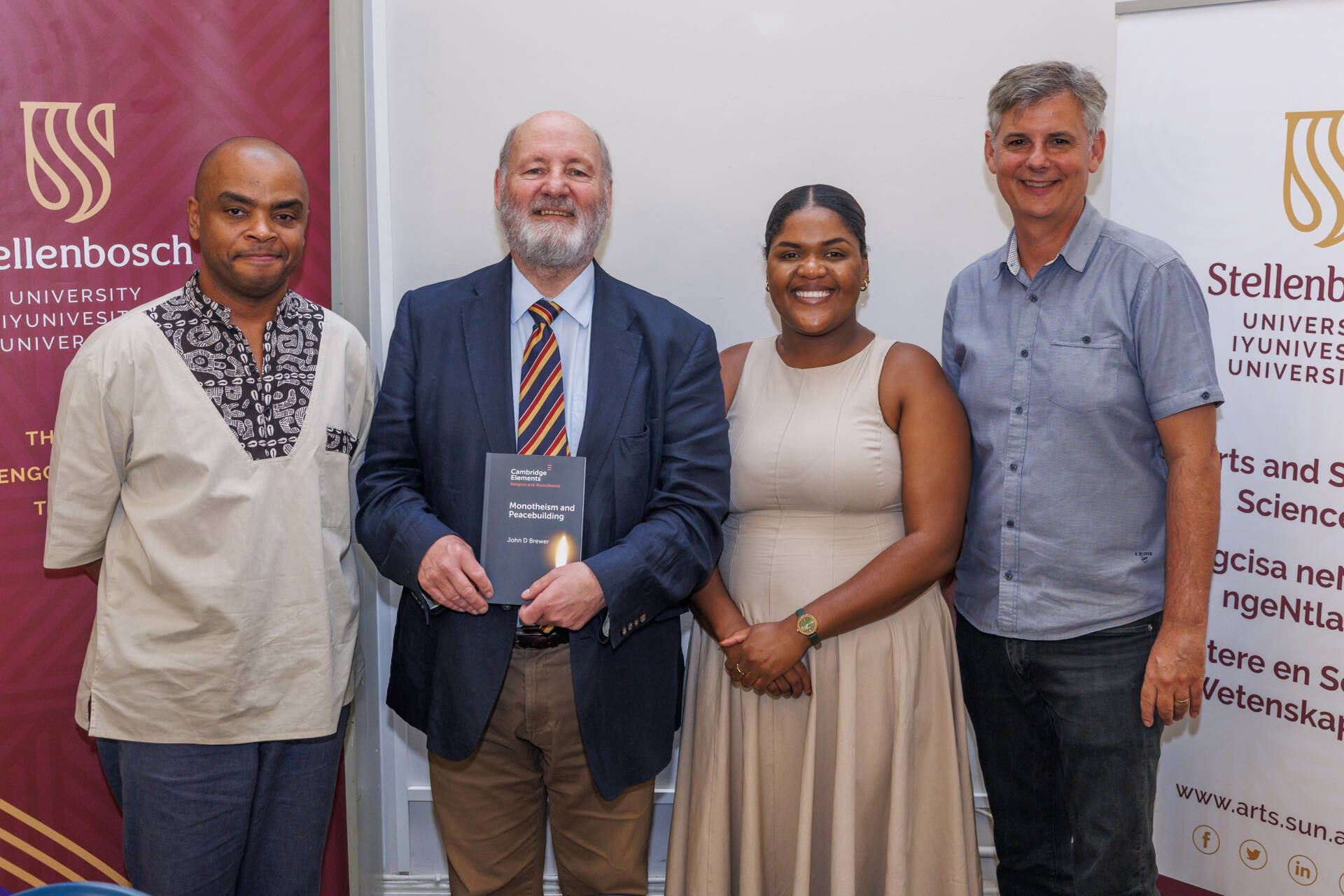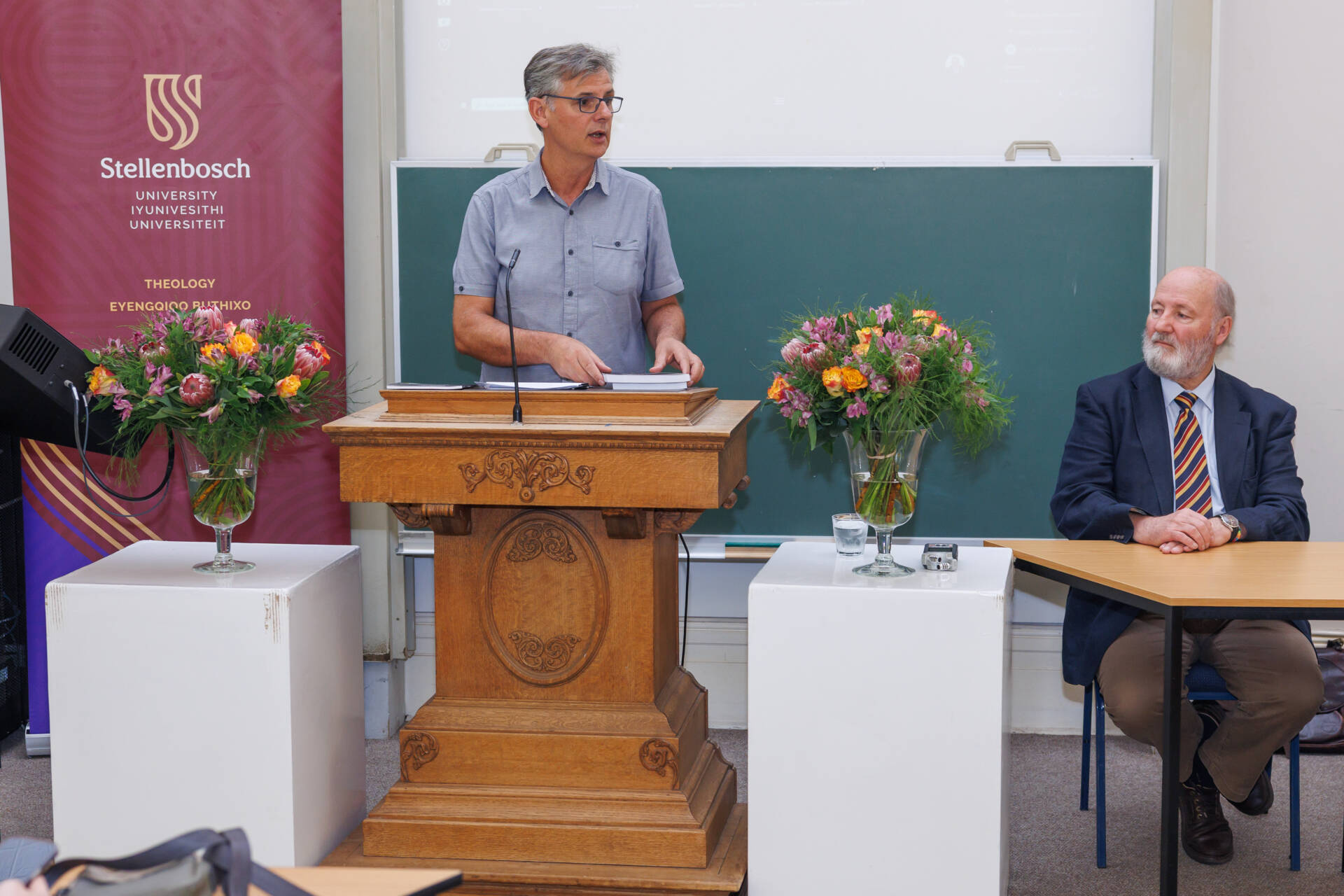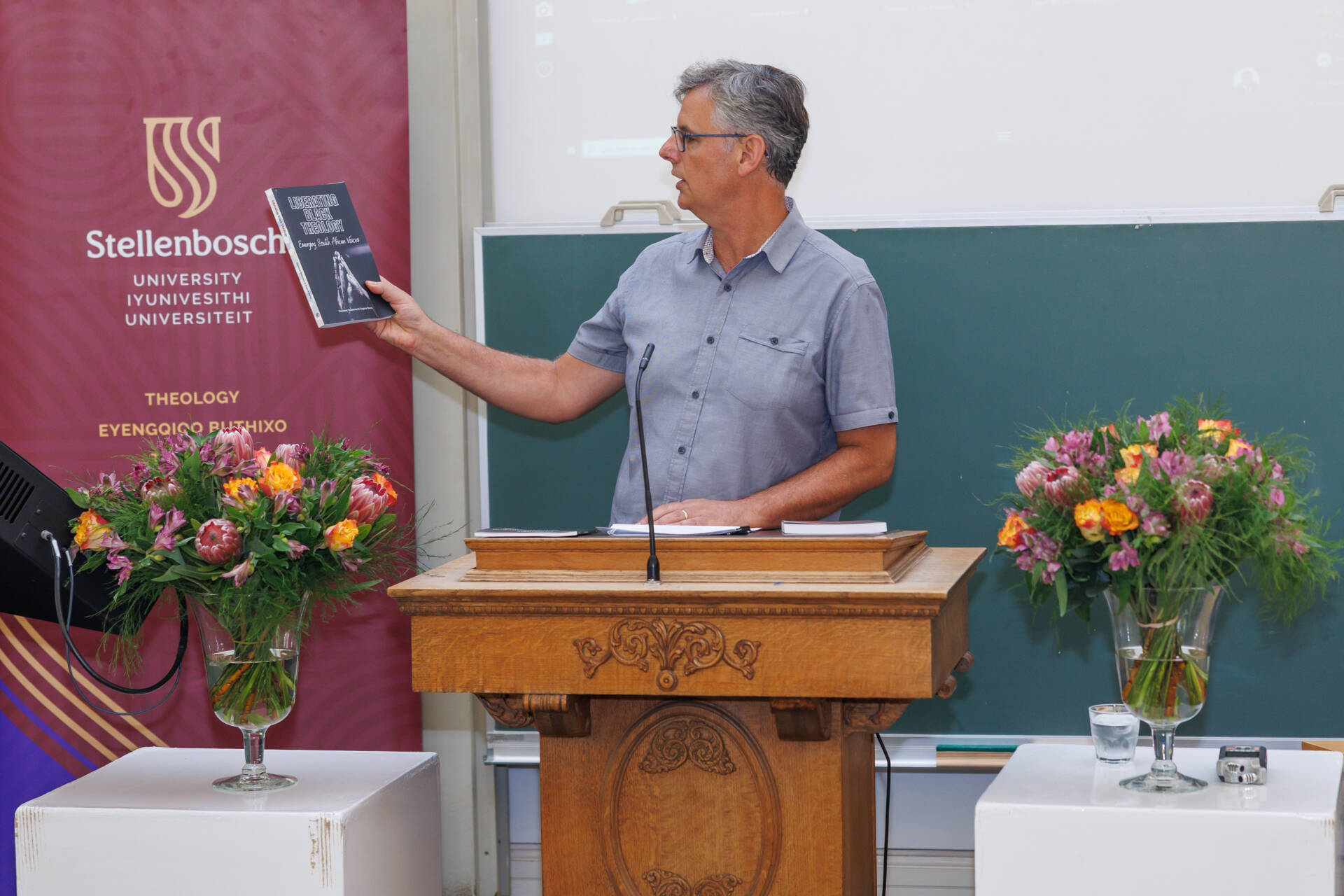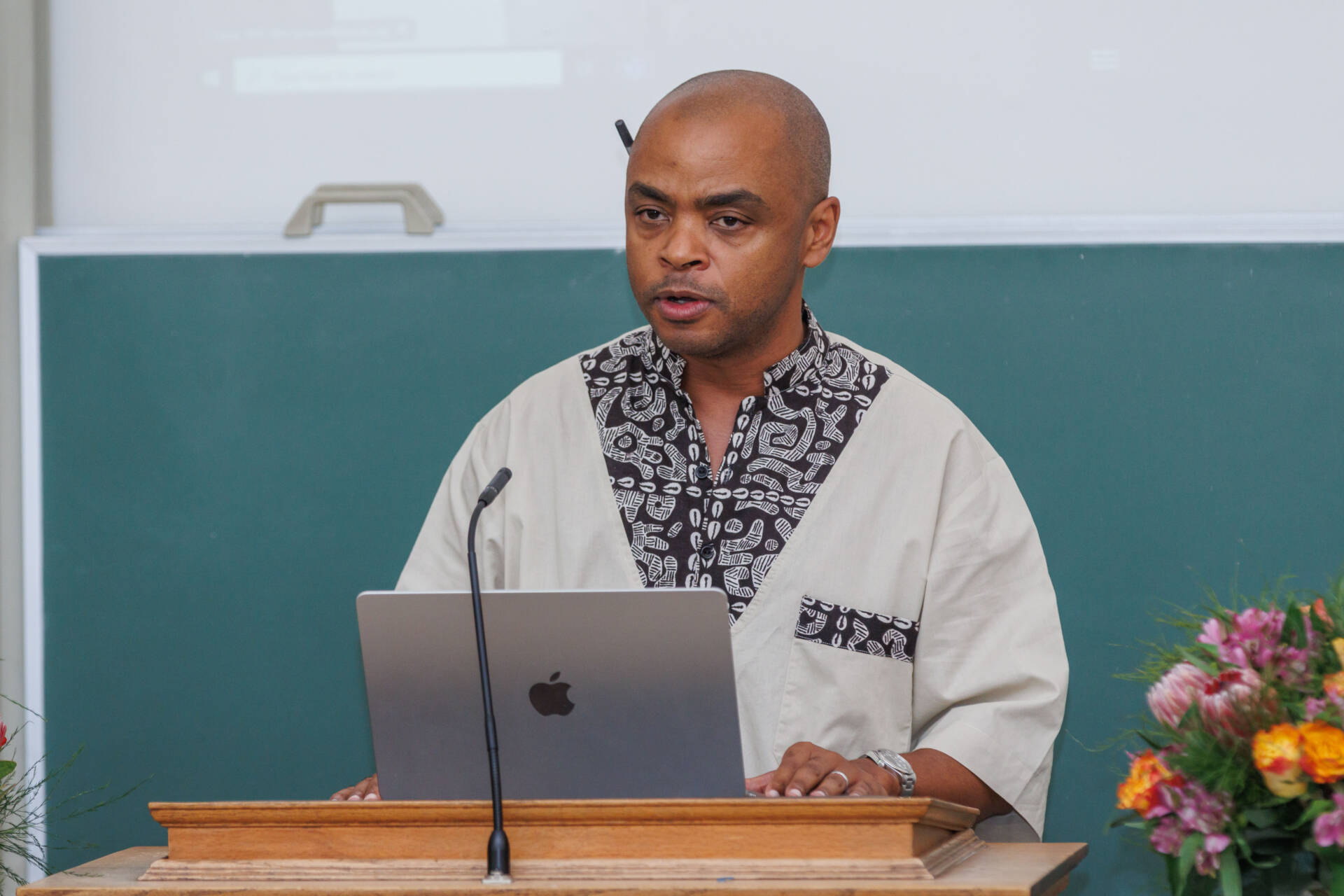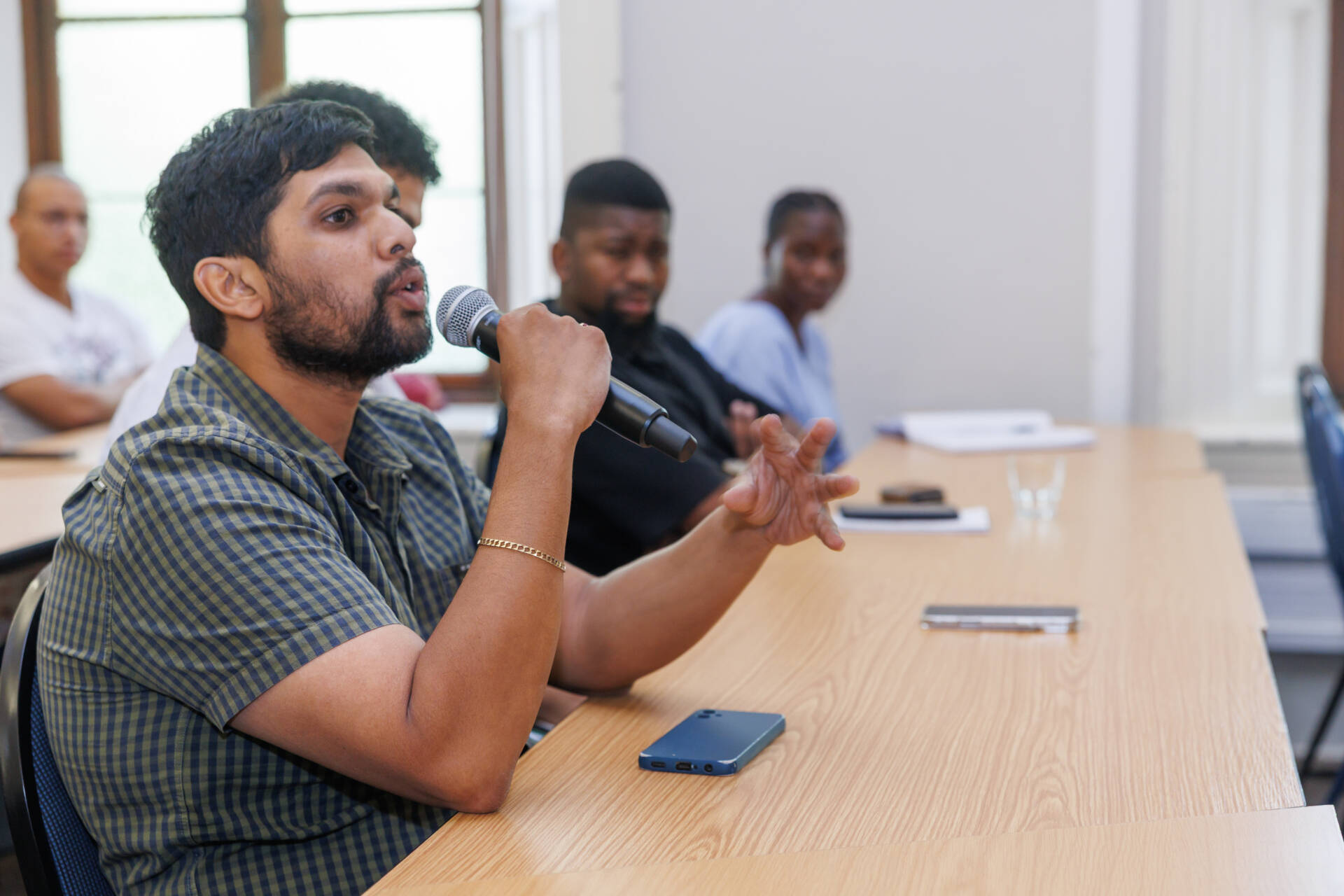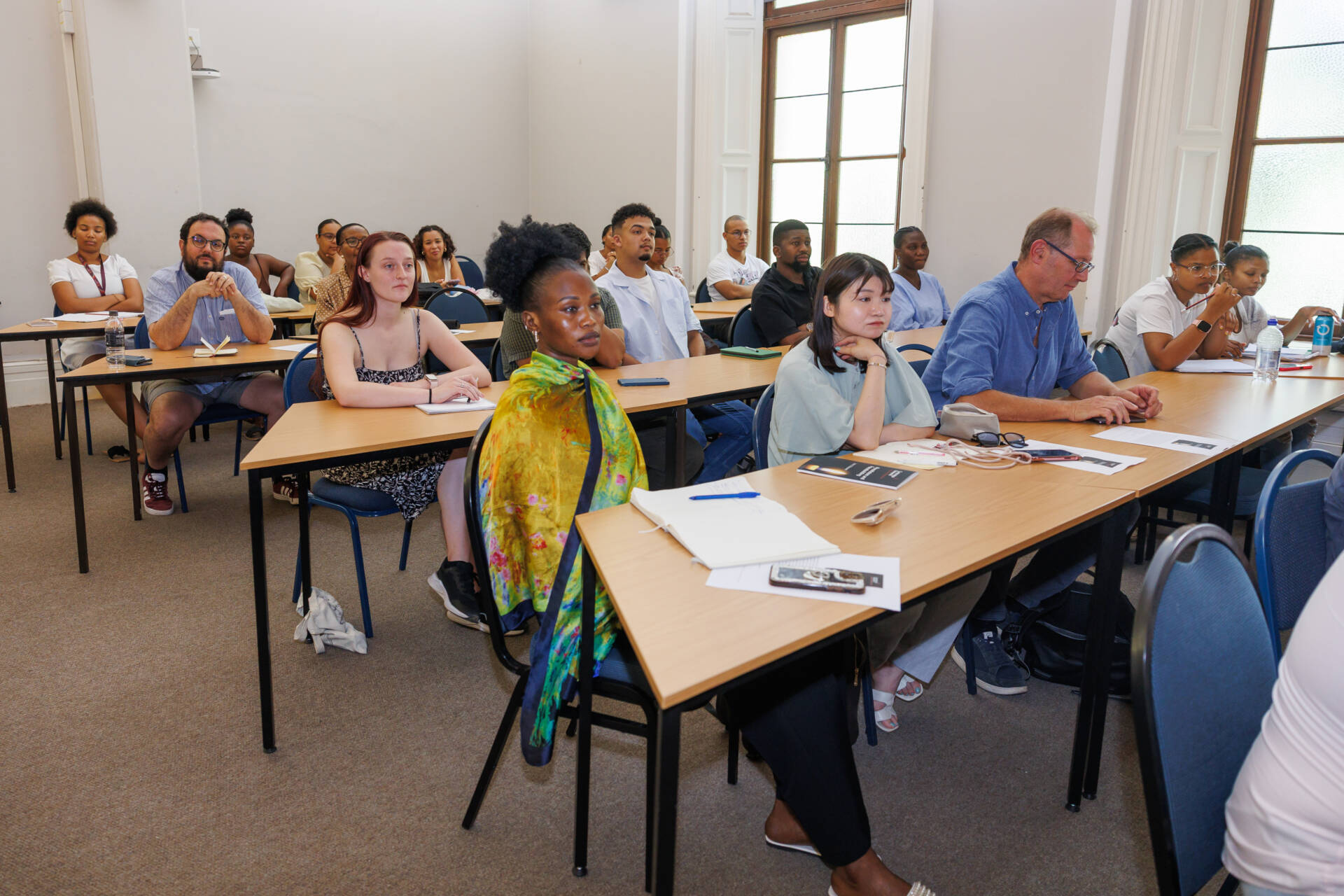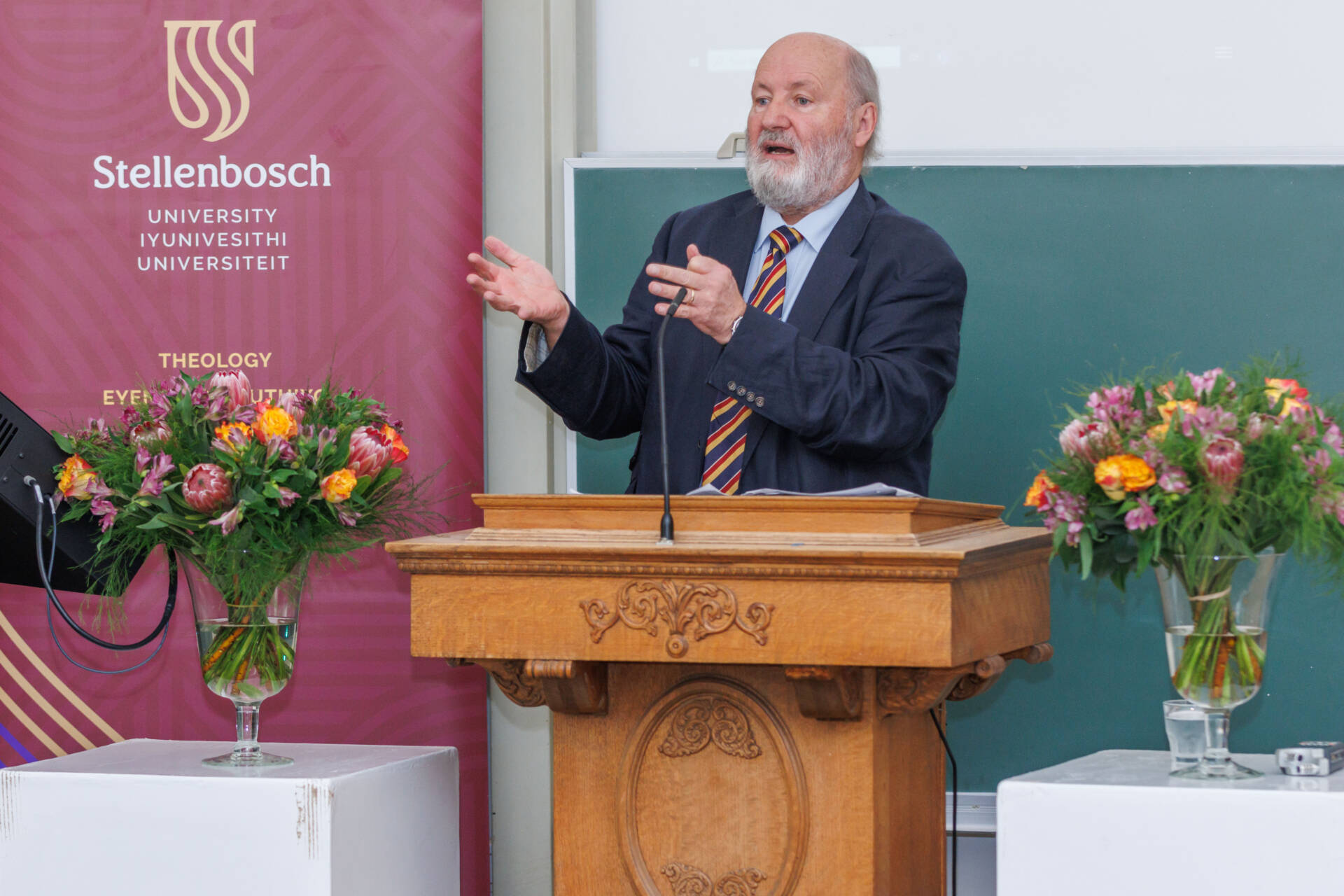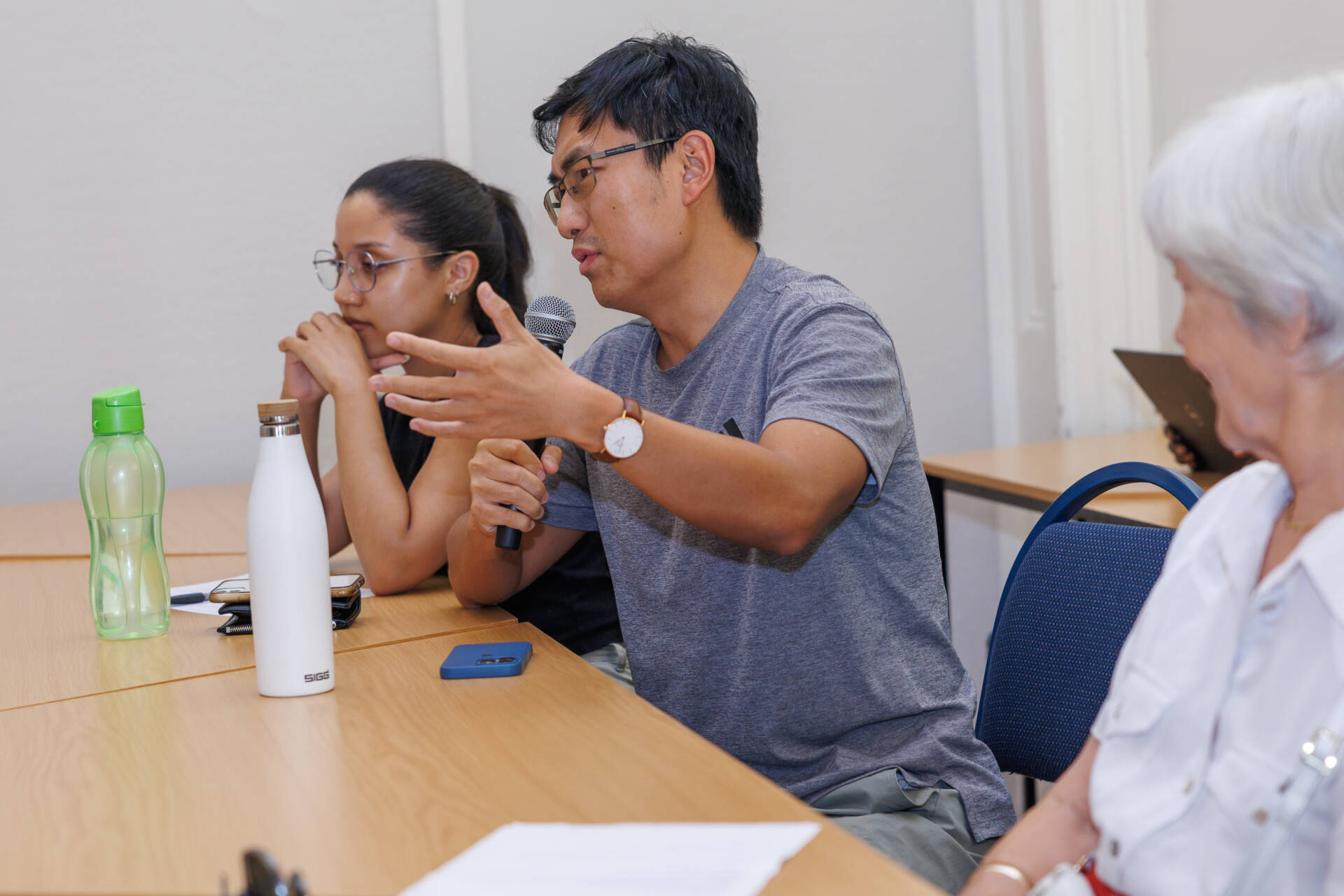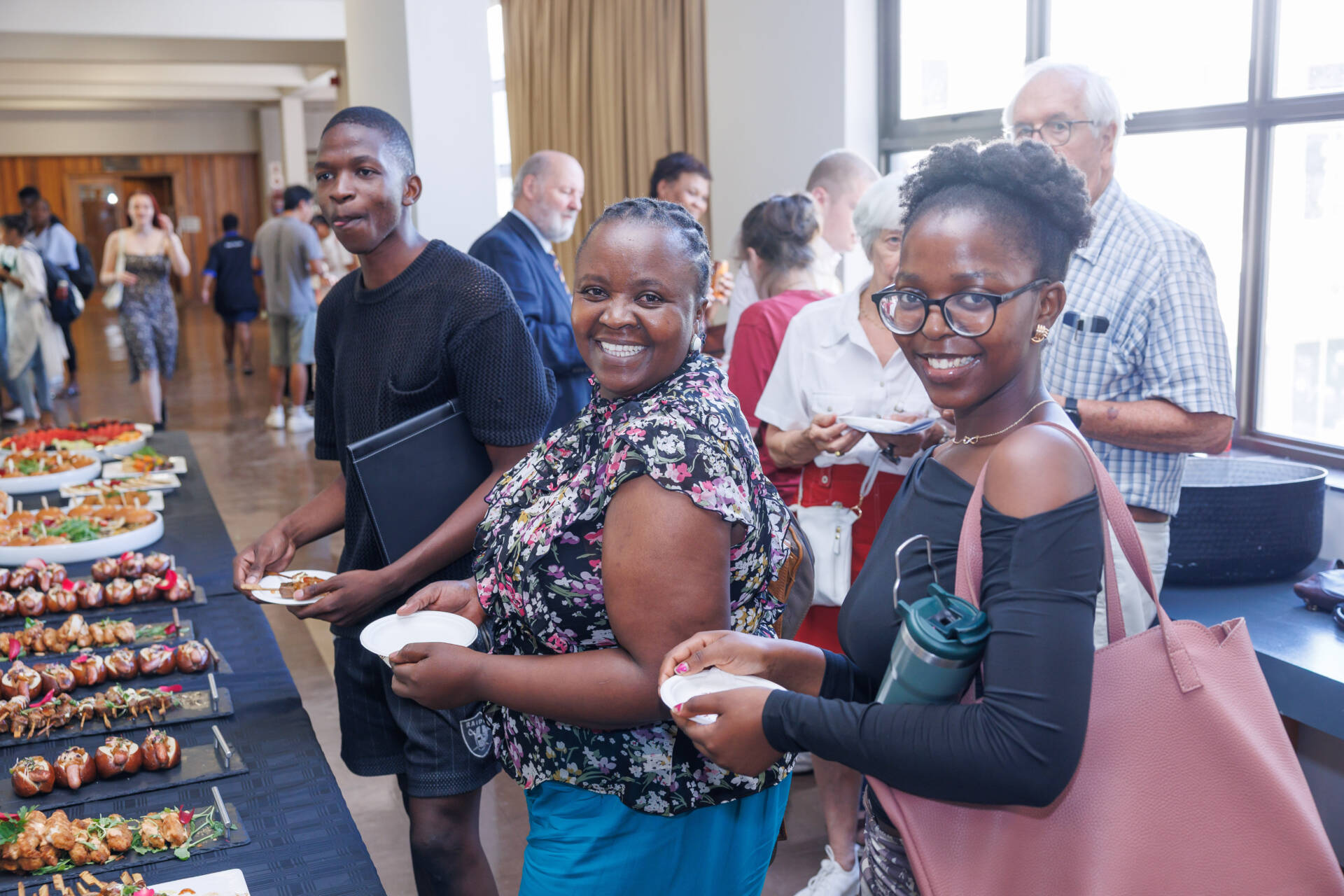Drawing on his recently published book, Monotheism and Peacebuilding, Prof John Brewer engaged with the complex interplay between faith, violence, and human behaviour reflecting on “why do people kill and die for religion.” Facilitated by Prof Robert Vosloo, the conversation examined the historical, psychological, and sociopolitical dimensions of religiously motivated violence. Drawing on case studies, theoretical perspectives, and lived experiences, the discussion critically interrogates the reasons why religion is sometimes invoked to justify acts of violence and self-sacrifice.
Prof Brewer’s lecture set the stage by addressing the paradox that, while religion is often associated with peace and moral virtue, it has also been implicated in some of history’s most violent conflicts. “While many religious doctrines advocate for non-violence, history reveals numerous instances where faith has justified both war and martyrdom,” he explains. Brewer emphasizes that religious violence is rarely about theology alone; instead, it is shaped by broader social, political, and economic factors. One of the key concepts Brewer introduces is sacred values, deeply held religious convictions that transcend rational cost-benefit analysis, making individuals willing to kill or die for their beliefs. Brewer states that “sacred values override material concerns, rendering compromise impossible”, illustrating how unwavering belief systems contribute to religious conflicts. He also highlights the role of identity politics in shaping religiously motivated violence. Brewer asserts that “religion often becomes entangled with ethnic and national identities, serving as both a mobilizing force and a justification for violence,”.
A significant portion of Brewer’s lecture focused on martyrdom as a recurring phenomenon in religious traditions. He outlines how martyrdom has historically been used as a tool for collective identity formation, reinforcing a sense of purpose and belonging within religious communities. “Religious narratives of sacrifice can inspire devotion, but they can also be weaponized to legitimize violence,” Brewer cautions. His analysis extends to contemporary extremism, where martyrdom is framed as both a spiritual and political act. Brewer also examines the psychological mechanisms that drive individuals to engage in religious violence. He references studies on group dynamics and cognitive biases, explaining that “group cohesion and perceived existential threats can push individuals toward radical action.” The in-group versus out-group mentality emerges as a major contributor to inter-religious conflict, wherein the perceived ‘other’ is demonized.
The illusion of moral superiority is another psychological factor Brewer explored. “When individuals believe their religious perspective is inherently righteous, they are more likely to dehumanize outsiders and justify acts of violence,” he notes. This psychological framework provides critical insights into how religious movements escalate from belief to violence.
Following Brewer’s lecture, Prof Demaine Solomons offers a nuanced response, emphasizing the socio-political conditions that create fertile ground for religious violence. Prof Solomons argued that “religious violence often thrives in environments marked by political oppression, economic disparity, and social marginalization.” He critiques reductionist narratives that attribute violence solely to religious zealotry, instead pointing to structural inequalities that drive individuals towards radicalism. Solomons delves into the role of religious fundamentalism, making an important distinction between fundamentalism and extremism. He explained that “not all fundamentalists are extremists, but most extremists emerge from fundamentalist backgrounds.” He also discussed the dangers of unchecked religious authority, warning that “when charismatic leaders use religious doctrine to justify violence, they manipulate faith to serve political ends.”
One of Solomons’ key contributions is his examination of how economic instability fuels extremism. He referenced case studies demonstrating how extremist groups exploit economic grievances to recruit followers, offering both financial incentives and a sense of purpose. “Many individuals join militant groups not out of religious fervour but because these groups provide stability in otherwise unstable conditions,” he asserted. This perspective shifts the conversation from theological justifications for violence to material and political realities.
During the Q&A session, audience members raised insightful questions about how religious education can serve as a tool for de-radicalization. Solomons responded by emphasizing the importance of critical thinking and historical literacy in religious instruction. “Curricula that promote interfaith dialogue and encourage questioning can help dismantle rigid belief systems that lead to violence,” he asserts. Dr Veeran Naicker, an attendee, highlighted the role of collective memory in shaping religious identity and, by extension, religious violence. Naicker noted that “historical grievances and narratives of persecution can be powerful motivators for violence when they are passed down through generations,”. In response, Brewer acknowledged the weight of historical trauma, adding, religious violence is often not about the present alone; it is about how the past is remembered and weaponized to justify present actions. Another Maawethu, asked whether secularism offers a viable solution to religious violence. Brewer responded with caution, arguing that while secular governance can reduce sectarian tensions, it is not a panacea. “The key is not to erase religious identity but to create systems where diverse beliefs can coexist without leading to violence,” he explains.
In conclusion, Prof Brewer’s lecture establishes a foundational understanding of religious violence, while Solomons’ response contextualizes these themes within contemporary realities. While faith itself is not inherently violent, its intersection with power, identity, and ideology can lead to conflict. Addressing religious violence requires a multi-faceted approach that includes education, policy interventions, and interfaith collaboration. As societies continue to grapple with these challenges, fostering dialogue, critical inquiry, and structural reform remains essential in breaking cycles of violence and promoting peaceful coexistence.
The book is available from the publisher and from Amazon

